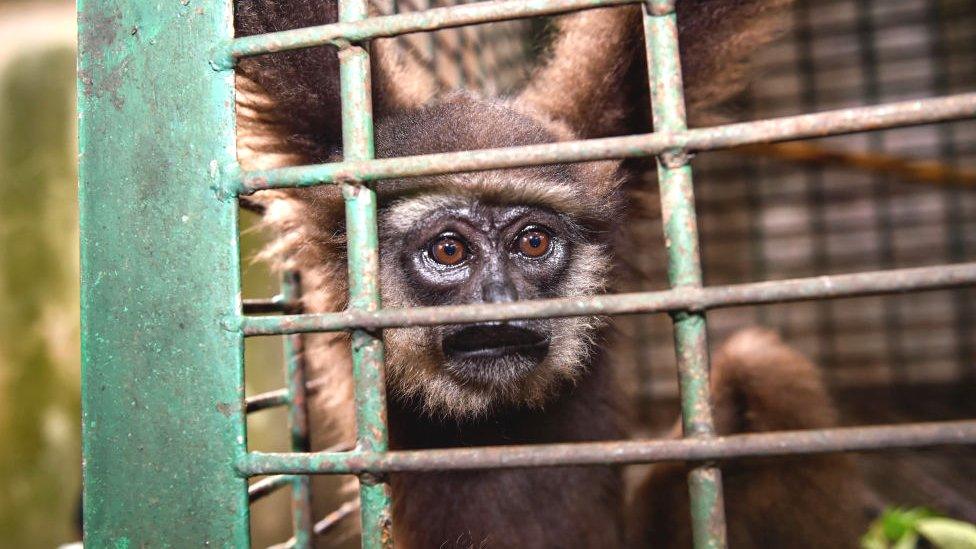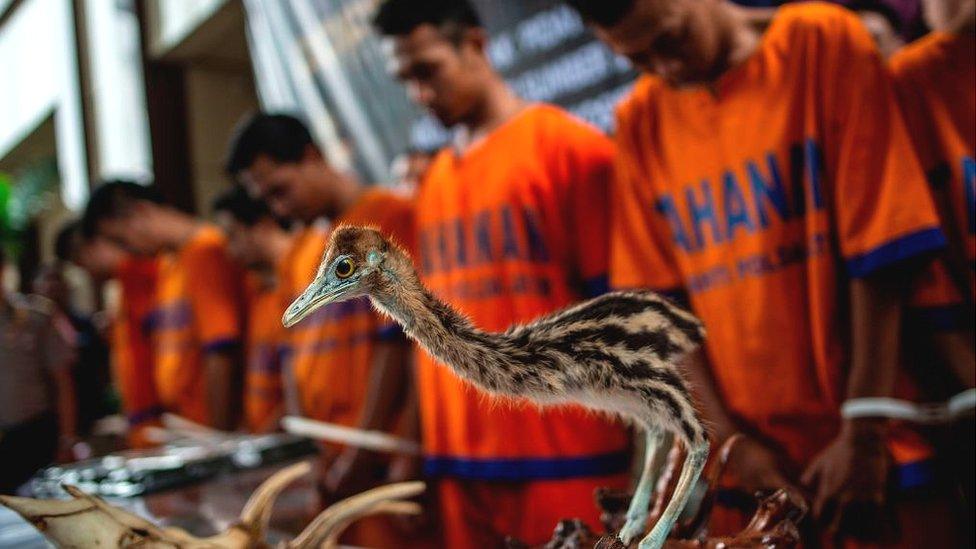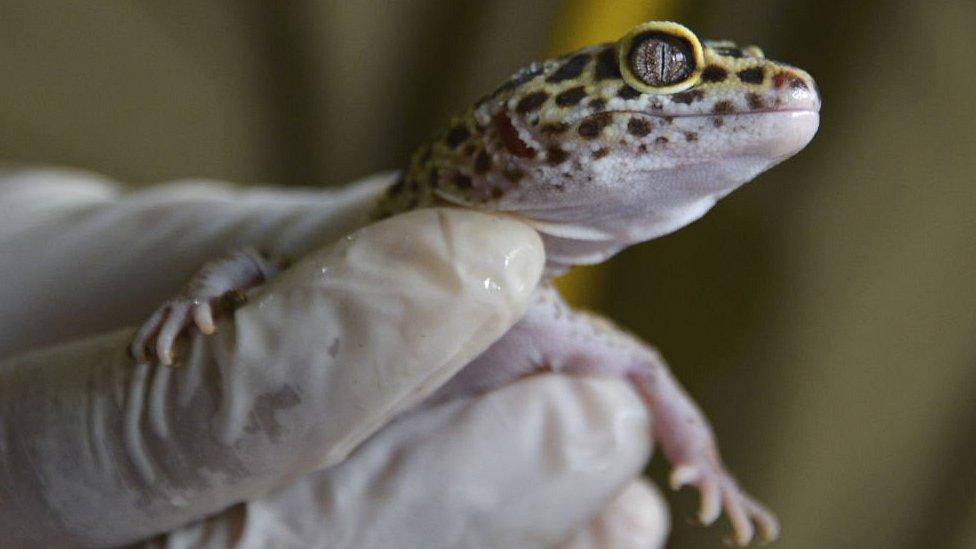Income inequality 'drives global wildlife trade'
- Published

A wild gibbon seized in Indonesia last year
More than 420 million wild animals have been traded in 226 nations over two decades, according to new figures.
Researchers say income inequality is driving the trade and suggest high-income countries should pay poorer ones to conserve wildlife.
The international trade in animals and plants stands as one of the biggest threats to endangered species.
The analysis shows wild animals are mostly moved from low-income countries to rich developed nations.
For instance, wild frogs are traded between Madagascar and the US, and wild fish exported from Thailand to Hong Kong.
Researchers argue that the lack of socioeconomic incentives in current multi-national agreements may be limiting the potential to crackdown on harmful trade.

Wild birds are traded across the world
Jia Huan Liew of the University of Hong Kong, who led the study, said countries supplying the most wildlife products should be given financial incentives to reduce trade over a set time period.
"At the end of this period, the exporting country will receive a pre-agreed sum if the target is met," he told BBC News.
"Funding would ideally be drawn from wealthy countries, given their commitment to the UN Sustainable Development Goals (SDG), and the fact that they play a disproportionately large role in the global wildlife market."
The researchers believe the pandemic could lead to a decline in international wildlife trade, due to a number of factors including bans on wildlife consumption in China. They say this should be viewed as the foundation for change.
"To avoid returning to business as usual, we should take advantage of the public's awareness of the possible consequences of consuming wildlife products to reduce demand, and make the Chinese ban on wildlife consumption permanent," Dr Liew said.

Animals are taken from the wild for the pet trade
The study, published in Science Advances, external, found that between 1998 and 2018, the global trade network was more extensive among pairs of nations with greater wealth divides.
The largest exporters of wildlife products were Indonesia, Jamaica and Honduras, while the US was the biggest importer, with France and Italy a distant second and third.
Cross-border trade in wild plants and animals is regulated by an international convention known as Cites (The Convention on International Trade in Endangered Species of Wild Fauna and Flora), which is designed to lower demand for threatened wildlife, allowing populations to recover.
Under the treaty, member nations must enforce trade restrictions in their own countries, but critics argue that Cites has limited powers to deal with inadequate domestic laws.
The scale of the trade in wildlife is huge; from 2006 to 2015, 1.3 million live animals and plants, 1.5 million skins, and 2,000 tonnes of meat were legally exported from Africa to Asia alone, according to one report by the NGO, Traffic.
Follow Helen on Twitter, external.